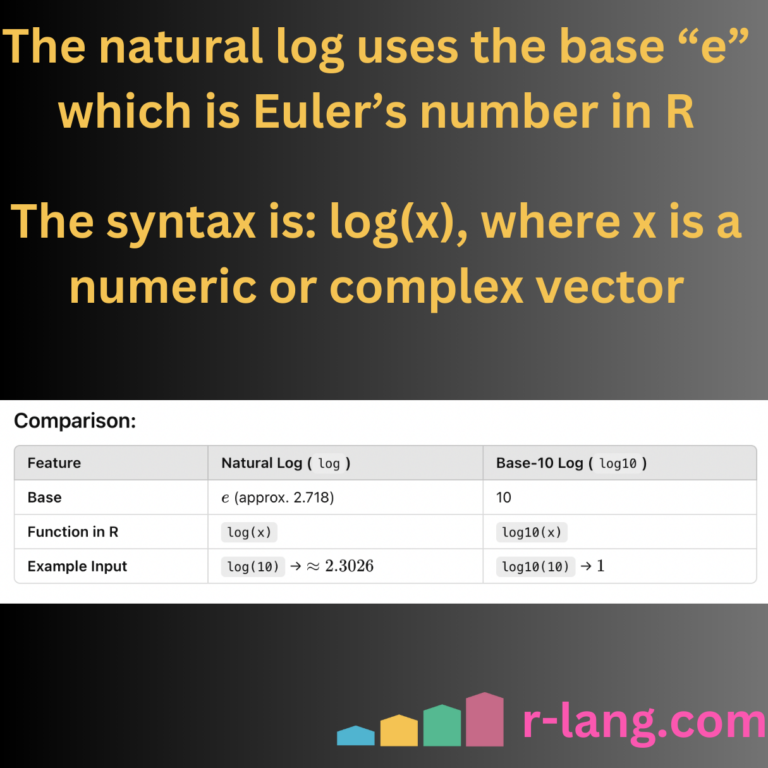Overview
The easiest way to calculate the natural log of a number or vector in R is to use the built-in log() function.
The natural log uses “e” as its base, whereas log10 uses 10. The “e” is Euler’s number, whose value is approximately 2.718.
In R, the formula for the natural log is ln(x) = loge(x), where e is the base.
One common confusion is that if you follow the “Calculators (mechanical device),” natural log means log10. However, if you are working with the language R, log is the natural log, and log10 is a different logarithm.
In this article, we will calculate the log of a value to the base e. Our core focus is on the natural log and not different bases.
Visual Representation
Natural logarithm of numeric value
Let’s take e as base and num as 100 and find the logarithm.
log(100) # 4.60517You can see that the natural log of 100 is 4.60517.
Natural logarithm of numeric vector
Define a numerical vector, pass the vector to the log() function, and see the output.
numbers_vec <- c(0, 1, 2, 10, 100)
natural_log_numbers <- log(numbers_vec)
natural_log_numbers
# [1] -Inf 0.0000000 0.6931472 2.3025851 4.6051702
You can see that the output is also a vector but each element is the natural log of input vector’s each element.
The natural log of 0 is -Inf.
The natural log of 100 is 4.60517, as we already saw earlier.
Complex numbers
Complex numbers are built upon real and imaginary numbers, but R handles them with ease because it has built-in capabilities to handle complex values well.
Define a vector of complex numbers and then calculate its ln values.
complex_vec <- c(0 + 1i, 1 + 3i, 19 + 21i)
natural_log_complex <- log(complex_vec)
natural_log_complex
# 0.000000+1.570796i 1.151293+1.249046i 3.343554+0.835357iPlotting the log() function
To plot the log() function on the graph, we can use the “curve()” function, which accepts the log() function and various other arguments and is used in conjunction with the abline() function to draw the horizontal axis.
# Plotting the natural logarithm function
curve(log(x),
from = 0.1, to = 10, col = "blue", lwd = 2,
xlab = "x", ylab = "ln(x)",
main = "Graph of Natural Logarithm (ln(x))"
)
abline(h = 0, col = "red", lty = 2) # Horizontal axis
abline(v = 1, col = "green", lty = 2) # ln(1) = 0That’s all!

Krunal Lathiya is a seasoned Computer Science expert with over eight years in the tech industry. He boasts deep knowledge in Data Science and Machine Learning. Versed in Python, JavaScript, PHP, R, and Golang. Skilled in frameworks like Angular and React and platforms such as Node.js. His expertise spans both front-end and back-end development. His proficiency in the Python language stands as a testament to his versatility and commitment to the craft.



